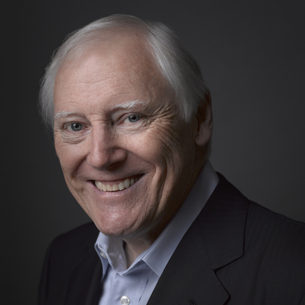
Authentic individuals make for self-aware, inspiring and effective leaders. They engender trust, defend their people when needed, motivate employees, push for change and take responsibility for mistakes. With an authentic leader in place, employee wellbeing and engagement grow, and so too do profits.
Leaders need a grasp of the so-called ‘triad of awareness’ – an inward focus, a focus on others, and an outward focus. The first two help to cultivate emotional intelligence, while the third improves a leader’s ability to strategize, innovate and manage the organization.
Taken from our webinar: Finding your Authentic Leadership Style with Belbin Team Roles. Jo Keeler (Belbin HQ) talks to Lindsay Lalla (Belbin North America) about leadership.
“To be authentic is to be the same person to others as you are to yourself. In part that entails paying attention to what others think of you, particularly people whose opinions you esteem and who will be candid in their feedback.”
Daniel Goleman, Harvard Business Review
But for leaders, this can be hard to come by. As we rise through the ranks, those who work for us are less likely to give the honest, open feedback necessary for effective leadership. In addition, research from Berkeley suggests that higher-ranking individuals tend to listen less to – and interrupt more – those beneath them in the power structure.
As Goleman goes on to say, we need a “structured way to match our view of our true selves with the views our most trusted colleagues have – an external check on our authenticity.”
In order to harness the insights others can provide, we need a structured, balanced and evidence-based feedback stratagem which enables leaders to cultivate leadership skills and greater emotional intelligence.
The Belbin reports provide just this. Many personality (or psychometric tests) are self-reported, so they are limited to the leader’s own view – the inner voice.
Belbin incorporates Observer feedback from co-workers, and analyzes and compares the two in depth, so that the individual’s self-knowledge can be contextualized in the light of the behavioral assets others see in them. Free of preconceptions, leaders can work towards maximizing their own strengths and aligning the two sets of views into a more authentic and coherent leadership style.
Finding out how you see yourself, and how others see you, is the first step towards self-awareness.
The Belbin report identifies a number of preferred or natural ways of working – these form the basis of our Team Roles leadership styles. But there are also a number of manageable roles: hidden assets that we take for granted and can cultivate with a little effort. These are the ‘Ferrari in the garage.’Or, to use another metaphor, our hidden leadership superpowers.
To understand the strengths others see we must ask them for feedback. We need a mix of internal and external awareness. Find out more about Belbin Observer assessments here.
This idea is in keeping with the theory of situational leadership developed by Ken Blanchard and Paul Hersey in 1969. According to situational leadership theory, we don’t have to rely on one static leadership style. Rather, we can adapt our leadership style to meet the needs of a particular situation or team.
To do this – and see the impact in our leadership style – requires consistent commitment to strengths-based initiatives and willingness to adapt.
Belbin helps develop leaders wherever they are within an organization, by helping people understand their strengths and how to work on their own personal ‘brand’.
Once leadership has grasped the full potential of unleashing and aligning strengths, the trickle-down effect within the organization can be powerful. Only by making strengths-based practices a fundamental strategic priority can leaders hope to instigate real change.
“In an uncertain environment, where there is lots of upheaval, leaders need to focus on their ability to communicate and connect with employees.”
IBM Institute for Business Value, 2015
There is no ‘one size fits all’ approach, no silver bullet. No job title, training course or policy which transforms someone into a leader. While it may be tempting to emulate leaders we admire, our predecessors or mentors, this is a road to nowhere.
When it comes to personal development, we are far more motivated and effective when working to our own strengths. Strengths-based management practices have been shown to boost sales, profits and engagement.
In Belbin terms, this means leveraging your behavioral strengths in the best way to meet your goals.
As Max Isaac (Belbin North America) says: “It’s not about the cards that you’re dealt. It’s how you play your hand”.
The Belbin report identifies a number of preferred or natural ways of working – these form the basis of our Team Roles leadership styles. But there are also a number of manageable roles: hidden assets that we take for granted and can cultivate with a little effort. These are the ‘Ferrari in the garage’ or, to use another metaphor, our hidden leadership superpowers.
For example, someone with strong Completer Finisher behavior may have made their mark by promoting high standards across an organization that was once slapdash and error-prone. But others might see and value Monitor Evaluator behaviors – the same person’s talent for strategic thinking and prudent decision-making. Armed with this knowledge, leaders can cultivate their behavior plan – their strategy for bringing those behaviors to the fore and aligning their self-understanding with others’ views.
Many leadership programs fail to make a real impact because they are not applied back in the office. Intellectual or theoretical understanding of particular leadership skills does not equate to practical application.
Charles Handy defined leadership in terms of purpose:
And leadership skills are practised and developed in relation to others too – there can be no leadership without a team to lead.
Our clients, pharmaceutical company Novo Nordisk, wanted to ensure that their leadership programme focused not just on personal development or executive education, but on situating leadership within a team context.
“There is no single leadership culture, no single leadership policy, philosophy or tenet which applies everywhere.”
John Williams, ILM Chief Executive
“Leadership in a team setting is much less about command and control, and more about getting the most out of a diverse and experienced group of individuals.” – EY, 2013
In his book, Team Roles at Work, Meredith Belbin describes the difference between solo and team leaders.
Distributed or rotated leadership takes this one step further, suggesting that the person best equipped to lead is the one who is best placed to do so, rather than someone with a particular job title or level. The disadvantages of ‘command and control’ or solo leadership are well known and documented, but many executives are cautious of distributed leadership. They might understand the importance of empowering teams with decision-making, but are nevertheless afraid that disorganization and chaos will result.
In order for distributed leadership to feel like a viable and safe option, strong foundations must be in place. These include purposeful selection and development of the team, knowing the strengths of each individual, and cultivating trust, accountability and psychological safety. Without careful attention to these factors, handing over responsibility could yield unpredictable results.
A strengths-based tool is a natural fit with distributed leadership, since it gives teams – and executives – the confidence to pursue projects and build teams on purpose, with the talents needed to lead the project through each stage of its life cycle. Leadership roles can be fulfilled by anyone, no matter their Team Role strength. If they know those strengths and can use them to advantage, they are likely to be effective leaders.
“The team leader does not expect to be wiser, more creative, or more far-seeing than colleagues, and in consequence is humbler than the solo leader. For that very reason the team leader seeks talent in order to compensate for any personal shortcomings and to improve the balance of the team.”
Dr. Meredith Belbin
Making distributed leadership work can require a more wholesale change in the way the organization functions – namely a more democratic approach. Deborah Ancona writes for Harvard Business Review on the importance of balancing power and control, so that new opportunities can be seized without a lone actor exposing the organization as a whole to undue risk.
In innovative start-ups, entrepreneurial leaders are expected to:
“Team leadership is the only form of leadership acceptable in a society where power is shared and so many people are near equals.”
Dr. Meredith Belbin, Team Roles at Work
In addition to solo and team leadership, there are a number of other different types and theories which can inform our understanding of leadership. This is by no means an exhaustive list.
Thinking about using Belbin for your leaders? What are the next steps?
Perhaps you know where you want to start, and that’s by becoming a Belbin expert.
Becoming Belbin Accredited gives you the knowledge and practical know-how to start using Belbin reports and to help your leaders.
We are a small and friendly team, ready to listen to your needs and to offer advice on how you can integrate Belbin. Let’s start a conversation.


Patrick offers more than 25 years of experience with some of the most successful businesses in Europe as a consultant, change manager and executive coach.
